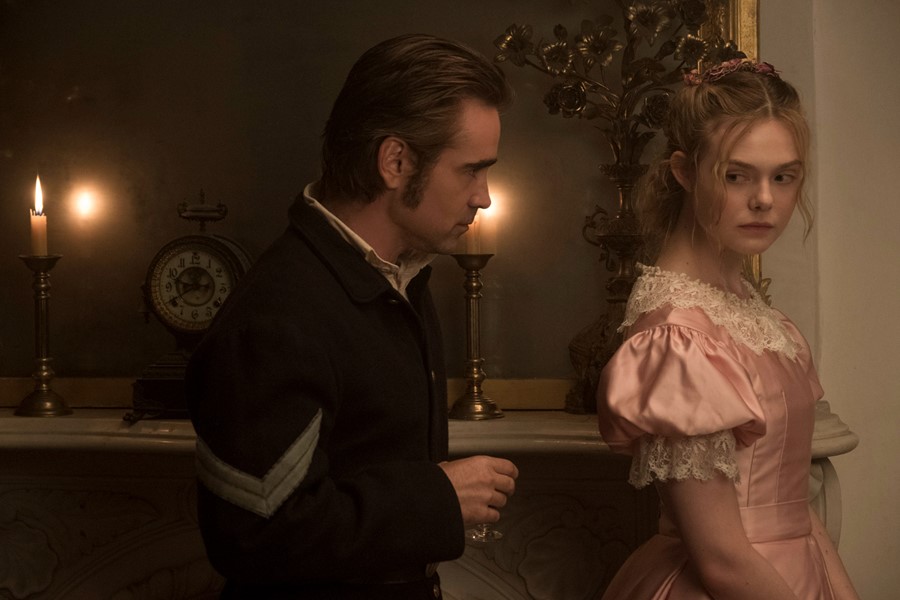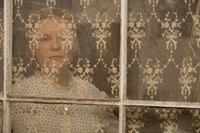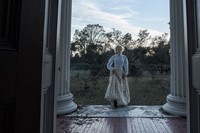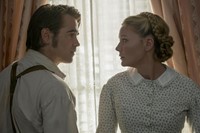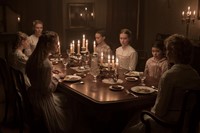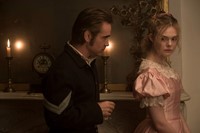Costume designer Stacey Battat talks us through the Civil War era confections she created for The Beguiled
Opening on the muddy boot-steps of a young girl, her haunting singing filling a misty, tree-lined boulevard, is Sofia Coppola’s widely acclaimed new film. The girl’s pale, ankle-length damask dress casts the era dial back to the 19th century and, with a pulpy pink font – the curlicues of which spell out the film’s title, The Beguiled – Coppola sets the agenda for the discordant and unnerving 94 minutes that follow. Gone is the California cool for which she is renowned: the desaturated dawn light of Scarlett Johansson’s room at Park Hyatt Tokyo in Lost in Translation (that pink wig, those sheer pants); gone too are the spacious sunny hours lost at Chateau Marmont in Somewhere; and the fondant fancies of Marie Antoinette’s court, offset by a New Romantic soundtrack.
However, the aloof teenage allure of the home-bound Lisbon sisters in The Virgin Suicides is present in a sense – though with a more insidious undertone this time – as is a plethora of very pretty petticoats. This time, feminine dress, in all its delicious guises, symbolises more carnal themes than we’re used to from Coppola. In this Christian boarding school, three years into the American Civil War, an injured Union soldier stumbles into this group of women’s lives and innocence, experience, longing, strength, and suppression all bubble forth from ruffled necklines, trailing cuffs and the slightest adjustment of a crochet shawl. We talked to costume designer Stacey Battat about how she created one of the film’s central stars: the costume.
“Sofia creates worlds,” Battat explains. “It’s one of the things that she is so good at and it’s one of the things that set her apart from other directors: she goes beyond the visual part. I think it’s got a lot to do with music, and the sound in general. I remember her saying something like, ‘I want them to feel left behind’. We talked about the light: it passing through the trees, and the idea of these diaphanous dresses that would catch the light. There’s a softness.” If she had to describe the world in just a few words? “It’s eerie, sumptuous and airy. And just lovely!”
And it is lovely. Between gut-wrenchingly tense scenes that see Colin Farrell’s character drive a wedge between the women of the house – from the house mistress Ms Martha (Nicole Kidman) to the young teacher Edwina (Kirsten Dunst) and pupil Alicia (Elle Fanning) – there are slow, sun-drenched moments that dapple Coppola’s unusually taut and rapidly unfolding plot. Time is lavished over the surroundings of the set (the whole film is shot in and around Madewood Plantation in Louisiana, as used in Beyonce’s Lemonade): mist rolls through the weeping willow out front and Technicolour rose bushes offer a saturated backdrop to McBurney’s (Colin Farrell) washed-out linen night shirt as he digs the weeds. The girls’ pretty cotton day dresses flutter in brief moments of levity as they play outside.
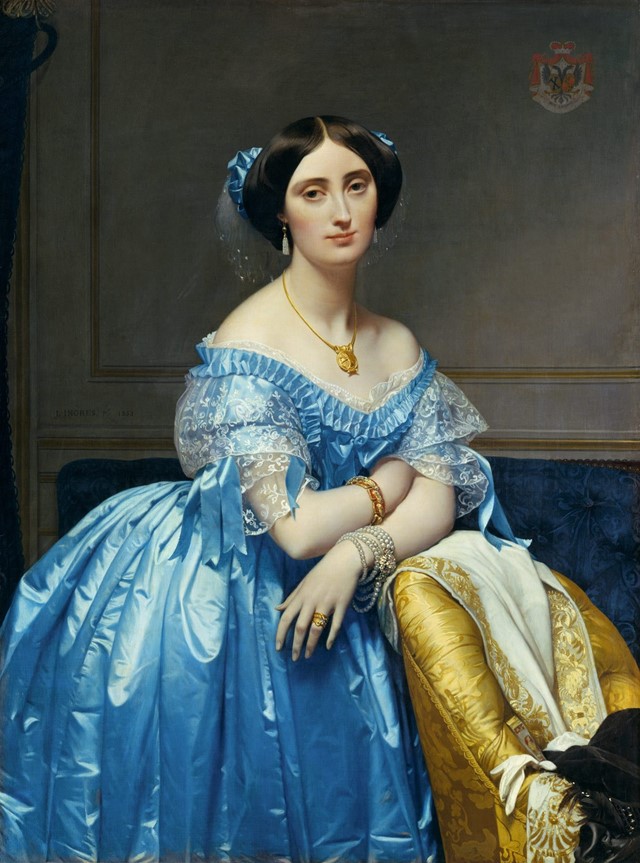
“The costumes are light, economical, flirty, and romantic,” explains Battat of the pared-back day dresses, but it’s by candlelight that they really come into their own. Taking inspiration from the dresses in portraits by Jean Auguste Dominique Ingres, silk, taffeta and pastel confections appear when McBurney comes to dinner. The act of dressing is used to signify a change in the house, and between the women. Edwina wears her special gold pin, the girls pick flowers from the garden for their hair and each detail belies their desperation for company from the outside world, all the while hinting to their limited means – there’s a sweet innocence to these acts of allure. “Yes, they try really hard with their extra-tightened corsets at dinner,” Battat agrees. “I just wanted them to feel like they put in effort for him after he’d arrived. Generally there’s not much jewellery at the beginning when he gets there and then when he arrives you know they don’t have much. They have ribbons, they have small pieces of jewellery and that’s really all they’ve got to impress him.”
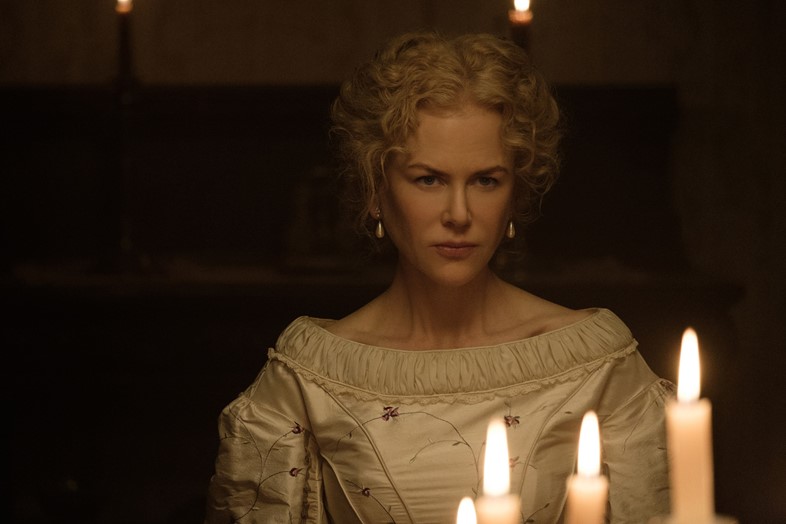
This modesty plays out through the dress designs too. “I think the dresses that you see for evening are less embellished than those you would typically see from the Civil War era. Back then, there would be four layers of ruffles at the neckline instead of one, that sort of thing. But I find it more attractive to be a little less embellished. I also thought of them exercising a certain economy: they did not have a lot, so maybe their dresses didn’t have as many embellishments because they could not afford all that lace. We changed all the colours and cuffs a lot because, historically, they wouldn’t have a lot of clothes, they would have had cheap dresses and then they would change out the customised collar to make a new look.”
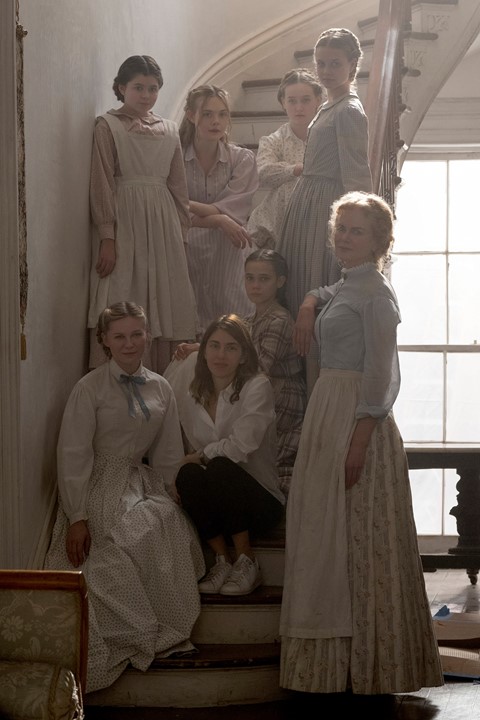
Using the economy of the era to justify streamlined looks that might better appeal to the modern eye ensures that Coppola’s cool aesthetic underpins every scene of this period film, despite being set in what could be a rather rigid locale: a conservative, Christian boarding school in the 19th century South. This time, Coppola’s trademark femininity is simply better disguised, wrapped into the plot – substance over style – with each element revealing something about its wearer. Edwina’s bare shoulders cause quite the stir at dinner – belying her character’s desperation to break free from the house.
Alicia’s undone details reveal a teenage desire to rebel: her trailing cuffs, loose hat ribbons and hair falling in front of her face all point to her flirty playfulness. The viewer is offered a visual depiction of her coming of age that would not have been acceptable in a Christian household – her behaviour is more reminiscent of teenagers today than those in the 19th century. Coppola uses these modern signifiers to unpick the period of the film and break away from its mold, which for Battat is the most enjoyable aspect of working with the director. “Working with a filmmaker who wants the visual aspects of the movie to tell a story is always great for someone who works with costumes or a cinematographer. It’s the best.”
The Beguiled is out in cinemas on July 14, 2017.
